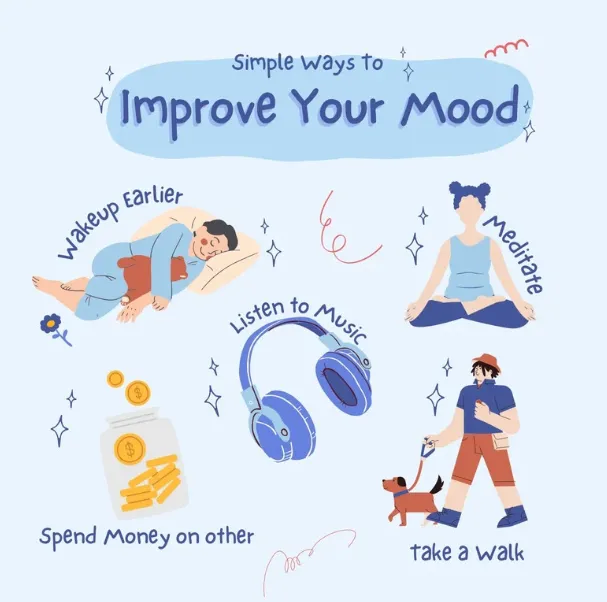Top Facts About Human Nutrition
Top Facts About Human Nutrition. A balanced human diet contains all essential ingredients in the correct proportions. There are certain factors that affect diet, such as
- Age—Children require more protein per kg of body weight than adults
- Gender—Males generally use more energy than females
- Activity—Higher levels of physical activity will increase demand for nutrients
- Pregnancy—Higher demands for nutrients in order to supply foetus with energy for development
- Breastfeeding mother—higher requirements for vitamin and water
Malnutrition
Malnutrition is the lack of a balanced diet, such as deficiencies, excesses or imbalances in a person’s intake of nutrients.

Malnutrition can lead to consequences such as:
- Obesity (excessive more likely to get diseases such as heart disease, diabetes and strokes; pain on joints due to excess weight)
- Starvation (insufficient food) is more likely to die as body doesn’t get required nutrients and therefore, can’t function
- Heart Disease (excessive saturated fat and cholesterol)—fat deposits build inside arteries, making them stiffer and narrower, leading to lower blood (and oxygen) getting through; muscles can’t work properly; blood clot forms, resulting in a heart attack
- Kwashiorkor (too much carbohydrates, too little protein)—underweight for age but look like they’re overweight due to high carbs in diet
- Constipation (lack of fibre)
- Marasmus (shortage of energy in diet)—undernourishment causing a child’s weight to be significantly low for their age.
Human Nutrition and Dietetics
In the simplest form, human nutrition and dietetics is the study of transforming food into tissues and energy resources. It is all about learning what food is the right food and how to take it the right way.
After the successful completion of intermediate, students can choose human nutrition and dietetics in their bachelor’s and, subsequently, master’s in human nutrition and dietetics.
Career Opportunities after M.Phil. Human Nutrition and Dietetics
Top Facts About Human Nutrition. After the master’s in human nutrition and dietetics, which is an M.Phil. in human nutrition and dietetics, students will get immense opportunities for their professional life and career growth.
For instance, various public sector organizations on national and international levels are always looking for ample career opportunities. In addition, many private organizations like clinics and health centers are also potential employers.
Public health departments, teaching, research, and development are some of the most available and sought-after organizations for professional dietitians and nutritionists.
Furthermore, the graduates can also start their private practices as and when they see fit. Concerning the diverse career options, students can explore career websites for accurate salary expectations for the position they are interested in.
Orientation to human nutrition The major purpose of this series of four textbooks on nutrition is to guide the nutrition student through the exciting journey of discovery of nutrition as a science. As apprentices in nutrition science and practice, students will learn how to collect, systemize, and classify knowledge by reading, experimentation, observation, and reasoning. The road for this journey was mapped out millennia ago. The knowledge that nutrition—what we choose to eat and drink—influences our health, well-being, and quality of life is as old as human history. For millions of years the quest for food has helped to shape human development, the organization of society, and history itself. It has influenced wars, population growth, urban expansion, economic and political theory, religion, science, medicine, and technological development. It was only in the second half of the eighteenth century that nutrition started to experience its first renaissance with the observation by scientists that intakes of certain foods, later called nutrients, and eventually other substances not yet classified as nutrients, influence the function of the body, protect against disease, restore health, and determine people’s response to changes in the environment. During this period, nutrition was studied from a medical model or paradigm by defining the chemical structures and characteristics of nutrients found in foods, their physiological functions, biochemical reactions and human requirements to prevent, first, deficiency diseases and, later, also chronic noncommunicable diseases. Since the late 1980s, nutrition has experienced a second renaissance with the growing perception that the knowledge gained did not equip mankind to solve the global problems of food insecurity and malnutrition. The emphasis shifted from the medical or pathological paradigm to a more psychosocial, behavioral one in which nutrition is defined as a basic human 2 Introduction to Human Nutrition is right, not only essential for human development but also as an outcome of development. In this first, introductory text, the focus is on principles and essentials of human nutrition, with the main purpose of helping the nutrition student to develop a holistic and integrated understanding of this complex, multifaceted scientific domain.
Relationship between nutrition and health
shows that individuals can be broadly categorized into having optimal nutritional status or being undernourished, overnourished, or malnourished. The major causes and consequences of these nutritional states are indicated. It is important to realize that many other lifestyle and environmental factors, in addition to nutrition, influence health and well-being, but nutrition is a major, able, and powerful factor in promoting health, preventing and treating disease, and improving quality of life.
(Can Probiotics Improve Your Mood? Recent research suggests that probiotics—beneficial bacteria found in foods like yogurt and in supplement form—may help reduce negative mood and modestly improve daily emotional well-being, particularly in healthy adults. However, the effects appear to be subtle, and probiotics should not be viewed as a replacement for established mental health treatments)
Nutrients: the basics
People eat food, not nutrients; however, it is the combination and amounts of nutrients in consumed foods that determine health. To read, one must know the letters of the alphabet; to do sums, one must be able to count, add, subtract, multiply, and divide. To understand nutrition, one must know about nutrients. The study of nutrients, the ABC and numeric calculations of nutrition, will form a major part of the student’s nutrition journey, and should include: ● the chemical and physical structure and characteristics of the nutrient ● the food sources of the nutrient, including food composition, the way in which foods are grown, harvested, stored, processed and prepared, and the effects of these on nutrient composition and nutritional value ● the digestion, absorption, circulatory transport, and cellular uptake of the nutrient, as well as regulation of all these processes; ● the metabolism of the nutrient, its functions, storage, and excretion; ● physiological needs (demands or requirements) for the nutrient in health and disease and during special circumstances (pregnancy, lactation, sport events), as well as individual variability; ● interactions with other nutrients, nonnutrients (phytochemicals), antinutrients, and drugs.
Relationship between nutrition science and practice
The journey through the scientific domain of nutrition will, at a specialized stage, fork into different roads. These roads will lead to the different scopes or branches of nutrition science that are covered in the second, third, and fourth texts of this series. These different branches of nutrition science could lead to the training of nutrition specialists for specific practice areas. The main aim of nutrition professionals is to apply nutrition principles to promote health and wellbeing, to prevent disease, and/or to restore health (treat disease) in individuals, families, communities and the population. To help individuals or groups of people to eat a balanced diet, in which food supply meets nutrient needs, involves application of nutrition principles from a very broad field to almost every facet of human life. It is therefore not surprising that these different branches or specialties of nutrition have evolved and are developing. They include clinical nutrition, community nutrition, public health, and public nutrition. It can be expected that there will be overlap in the practice areas of these specialties.
Carob Powder: Benefits & Uses Side Effect. Carob powder, also called carob flour, is a cocoa powder alternative. It’s made from dried, roasted carob tree pods and looks a lot like cocoa powder. Carob powder is often used as a natural sweetener in baked goods. It’s sweet and has a unique taste. Read on to learn about the health benefits and nutrition facts for carob powder.





